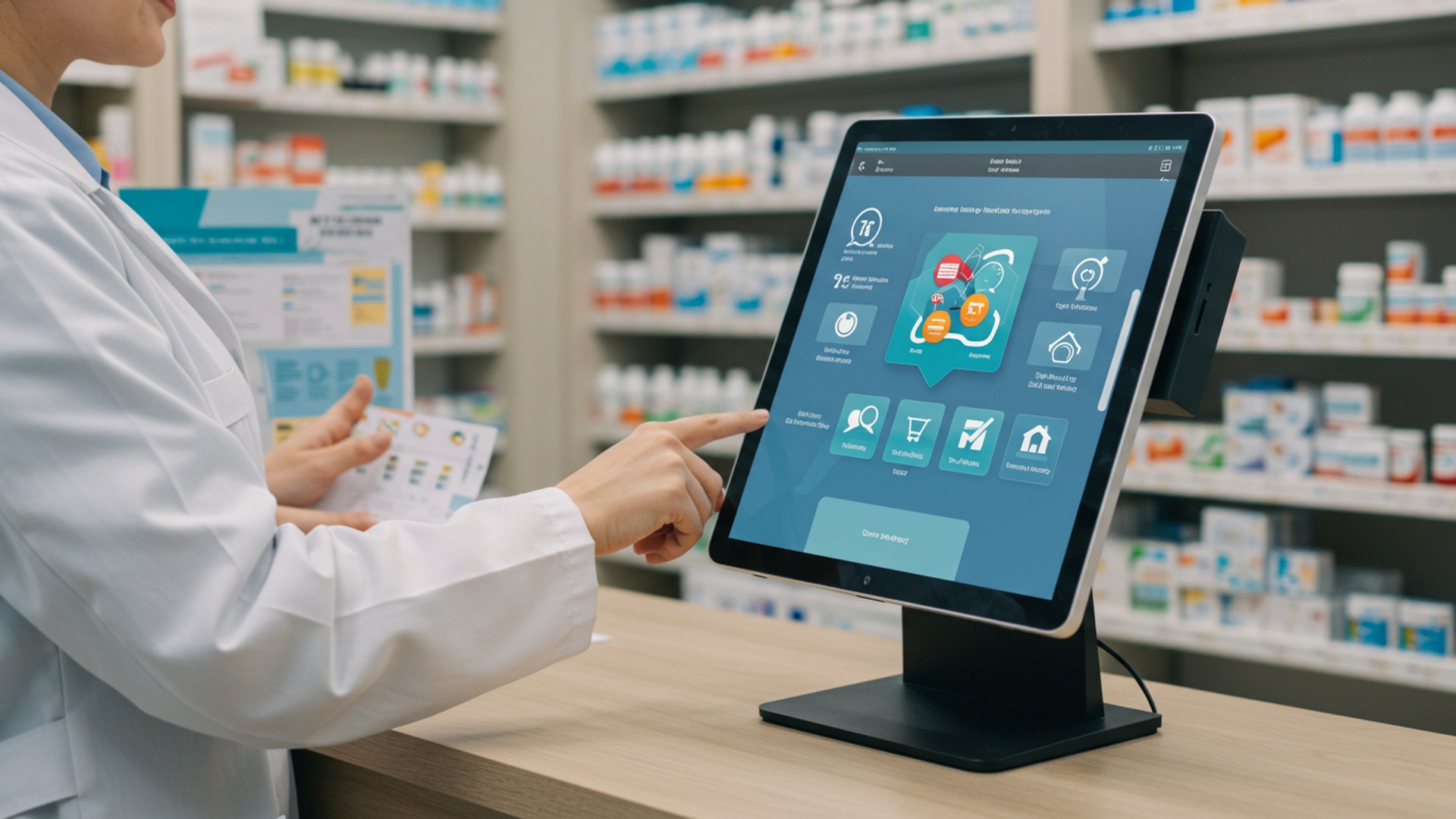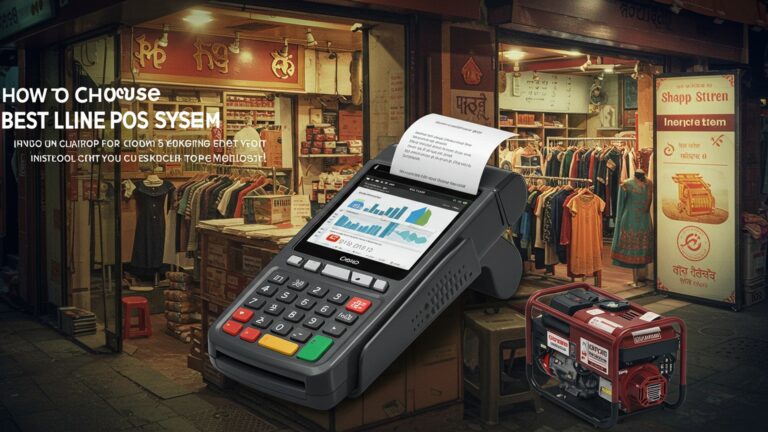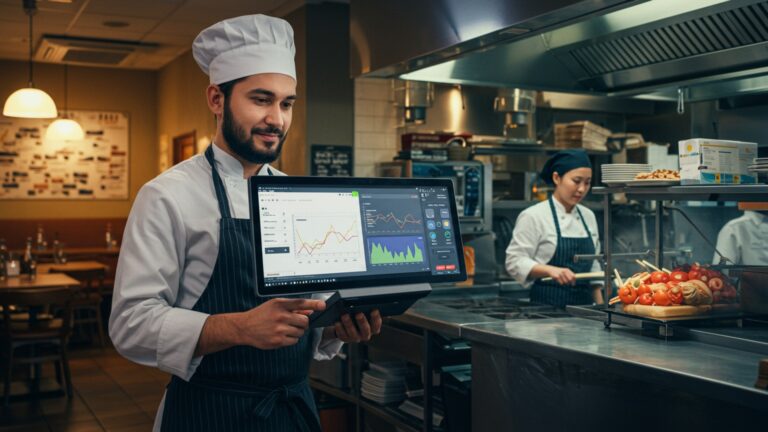Learn 7 Key Features Your Pharmacy POS System Must Have
Navigating the intricate landscape of modern pharmacy operations demands more than just processing transactions; it requires a strategic technological backbone that streamlines workflows and elevates patient care. From managing complex inventory with cold chain requirements to ensuring seamless prescription adjudication and integrating telehealth services, pharmacies face escalating demands. A sophisticated pharmacy POS system is no longer a luxury but a fundamental necessity, transforming daily tasks into data-driven insights and optimizing every customer touchpoint. Outdated systems create bottlenecks, jeopardize compliance. erode patient trust in an era where digital engagement and personalized health solutions are paramount. The right POS empowers pharmacies to not only adapt but thrive, fostering efficiency and improving outcomes.

Seamless Prescription Management Integration
At the heart of any pharmacy operation lies prescription fulfillment. A robust pharmacy POS system must offer deep, seamless integration with your existing or new pharmacy management software (PMS). This isn’t just about scanning a barcode; it’s about creating a unified workflow that prioritizes patient safety, reduces errors. enhances efficiency. Imagine a world where prescription details, patient demographics. insurance insights flow effortlessly from the dispensing system to the point of sale. This integration minimizes manual data entry, which is a common source of human error. speeds up transaction times, allowing pharmacists and technicians to dedicate more time to patient care.
- Electronic Prescribing (e-Prescribing) Support
- Refill Management
- Drug Utilization Review (DUR) Integration
- Real-time Patient Data Access
The system should easily handle electronically transmitted prescriptions, reducing the risk of misinterpretation from handwritten scripts and streamlining the intake process.
Automating refill requests and notifications, both for patients and staff, ensures medication adherence and a consistent revenue stream. A good pharmacy POS system can even link to patient communication platforms to send automated reminders.
While primarily a function of the PMS, the POS should support the output of DUR alerts at the point of sale, ensuring that potential drug interactions or contraindications are flagged before the medication leaves the pharmacy.
When a patient is at the counter, their entire prescription history, allergies. insurance details should be immediately accessible, facilitating quicker, more informed service.
For example, consider a patient picking up multiple prescriptions. With proper integration, the POS system automatically pulls all pending prescriptions for that patient from the PMS, allows for quick verification. processes the co-pays and payments in a single, streamlined transaction, reducing patient wait times and improving their experience.
Advanced Inventory Management Capabilities
Effective inventory management is critical for profitability and patient care in a pharmacy. Medications are high-value, often time-sensitive assets. a superior pharmacy POS system provides the tools to manage them meticulously. Beyond basic stock tracking, it needs to offer features that prevent stockouts, minimize waste. optimize purchasing.
- Perpetual Inventory Tracking
- Expiry Date Management
- Automated Reordering
- Vendor Management & Pricing
- Controlled Substance Tracking
Every sale and every delivery should instantly update stock levels, providing an accurate, real-time snapshot of your inventory. This is vital for managing controlled substances and high-demand medications.
Medications have strict expiry dates. The POS system should track these dates and generate alerts for soon-to-expire products, allowing you to manage returns, discounts, or donations proactively, thereby reducing losses.
Based on historical sales data, current stock levels. vendor lead times, the system should be able to generate automated purchase orders, ensuring you never run out of critical medications while avoiding overstocking. This feature can significantly reduce the manual effort involved in ordering.
Easily manage multiple suppliers, track their pricing. identify the most cost-effective options for different products. Some advanced systems can even compare vendor prices in real-time.
Strict regulations govern controlled substances. Your pharmacy POS system must provide robust tracking and reporting capabilities to ensure compliance with DEA regulations, including detailed audit trails for every transaction involving these medications.
A real-world application involves preventing drug shortages. By accurately tracking usage patterns and supplier lead times, the system can proactively suggest reorders, ensuring a continuous supply of vital medications like insulin or common antibiotics, even during flu season spikes.
Robust Customer Relationship Management (CRM) Features
In today’s competitive healthcare landscape, patient loyalty is invaluable. A comprehensive pharmacy POS system extends beyond transactional processing to incorporate powerful CRM functionalities that help build lasting patient relationships. Understanding your patients’ needs and preferences allows for personalized service and targeted engagement.
- Detailed Patient Profiles
- Loyalty Programs & Rewards
- Personalized Communication
- Purchase History & Recommendations
Store comprehensive patient data, including contact details, prescription history, allergies (from PMS integration), communication preferences. even notes on specific patient needs or preferences.
Implement and manage loyalty programs directly through the POS. Track points, offer discounts, or provide exclusive benefits to frequent customers, encouraging repeat business. For example, a system could automatically apply a discount after a patient purchases five OTC items.
Leverage patient data to send targeted communications, such as flu shot reminders, medication adherence messages, or promotions on relevant health products. This could be integrated with email or SMS platforms.
examine past purchases to offer personalized recommendations for OTC products, vitamins, or health supplements, enhancing the patient experience and boosting upsell opportunities.
Consider a scenario where a patient regularly purchases cold and flu remedies. A smart pharmacy POS system can identify this pattern and, during peak cold season, automatically prompt staff to remind the patient about flu vaccinations or recommend specific immune-boosting supplements, providing added value and reinforcing the pharmacy’s role as a health partner.
Secure and Flexible Payment Processing
The ability to process payments securely, efficiently. with flexibility is non-negotiable for any retail environment, especially a pharmacy handling sensitive patient insights. Your pharmacy POS system must support a wide range of payment methods while adhering to the highest security standards.
- EMV Compliance
- PCI DSS Compliance
- Multiple Payment Options
- FSA/HSA Card Acceptance
- Insurance Co-pay Processing
Essential for protecting against counterfeit card fraud, ensuring your system can read chip cards is a fundamental security requirement.
Adherence to Payment Card Industry Data Security Standard (PCI DSS) is crucial for safeguarding cardholder data, protecting both your business and your patients from data breaches. Look for systems that use point-to-point encryption (P2PE) and tokenization.
Support for credit/debit cards, contactless payments (NFC like Apple Pay, Google Pay), mobile payments, gift cards. even future payment technologies ensures convenience for all patients.
As many health-related purchases are eligible for Flexible Spending Accounts (FSA) and Health Savings Accounts (HSA), your POS must be able to process these specialized payment cards seamlessly.
While the PMS handles the bulk of insurance claims, the POS must accurately calculate and process patient co-pays, deductibles. out-of-pocket expenses resulting from insurance adjudication.
A practical example: A patient wants to pay using a combination of their HSA card for a prescription and a regular credit card for an OTC item. A well-designed pharmacy POS system can split the transaction effortlessly, ensuring correct billing and a smooth checkout process.
Comprehensive Reporting and Analytics
Data is power. for a pharmacy, insightful data can drive better business decisions, optimize operations. identify growth opportunities. A top-tier pharmacy POS system offers robust reporting and analytics capabilities that transform raw transaction data into actionable intelligence.
- Sales Performance Reports
- Inventory Performance Reports
- Patient Purchase Trends
- Employee Performance
- Financial Summaries
Track sales by product, category, time of day, day of week. staff member. Identify your best-selling items, peak hours. staff productivity.
examine inventory turnover, identify slow-moving or obsolete stock. evaluate the effectiveness of your purchasing strategies. This helps in optimizing shelf space and reducing carrying costs.
grasp what your patients are buying, identify popular bundles. spot demographic purchasing patterns. This data can inform marketing strategies and product stocking.
Monitor individual staff sales, transaction counts. average transaction values to identify training needs or reward top performers.
Generate daily, weekly, or monthly summaries of sales, returns, discounts. payment methods for easier reconciliation and financial planning.
For instance, by analyzing sales reports, a pharmacy owner might discover that specific over-the-counter allergy medications sell significantly better on weekends. This insight allows them to adjust staffing levels, promotions. inventory stocking for those days, maximizing sales potential and operational efficiency.
Adherence to Compliance and Regulatory Standards
Pharmacies operate within a highly regulated environment. Any pharmacy POS system must be designed with built-in features that facilitate compliance with federal, state. local healthcare regulations. Non-compliance can lead to severe penalties, loss of license. damage to reputation.
- HIPAA Compliance
- DEA Regulations
- Prescription Drug Monitoring Program (PDMP) Integration
- Audit Trails
- State Pharmacy Board Requirements
The system must adhere to the Health Insurance Portability and Accountability Act (HIPAA) regulations for protecting patient health details (PHI). This includes secure data storage, access controls. audit trails for all data interactions.
For controlled substances, the POS system needs to support accurate tracking, reporting. record-keeping in accordance with Drug Enforcement Administration (DEA) requirements. This often includes detailed logs of dispensing, returns. inventory counts.
In many states, pharmacists are required to check PDMP databases before dispensing certain controlled substances. A POS system that integrates or facilitates easy access to PDMP data streamlines this critical compliance step.
Every action taken within the system—from a sale to an inventory adjustment to a patient profile update—should be logged with timestamps and user identities. This provides an indisputable record for audits and investigations.
Systems should be flexible enough to accommodate unique state-specific regulations regarding dispensing, counseling. record-keeping.
A practical example of compliance in action: a pharmacist processes a prescription for a Schedule II controlled substance. The pharmacy POS system, integrated with the state’s PDMP, automatically prompts a check, records the verification. creates an immutable audit trail of the dispensing process, satisfying multiple regulatory requirements simultaneously.
Scalability and Multi-Store Management
Whether you’re an independent pharmacy planning for growth or part of a small chain, your pharmacy POS system needs to be scalable and capable of managing multiple locations efficiently. This ensures that your technology investment can grow with your business without requiring a complete overhaul.
- Centralized Management
- Cloud-Based Architecture
- Data Synchronization
- Flexible Configuration
- Hardware Agnostic
For multi-store operations, a single, centralized system to manage inventory, pricing, promotions. employee data across all locations is invaluable. This ensures consistency and reduces administrative overhead.
Cloud-based POS solutions offer superior scalability, accessibility from anywhere. automatic updates. They also reduce the need for expensive on-site server infrastructure and associated maintenance.
Real-time data synchronization across all stores and headquarters is crucial for accurate reporting, inventory balancing. consistent patient experience, regardless of which location they visit.
The ability to configure different settings, prices. inventory levels for individual stores while maintaining central control is essential for adapting to local market needs.
A flexible system should be compatible with a range of standard POS hardware (scanners, printers, cash drawers), allowing you to choose the best options for each location without being locked into proprietary equipment.
Imagine a small pharmacy chain expanding from two to five locations. A scalable pharmacy POS system would allow the new stores to be brought online quickly, immediately integrating into the central inventory and reporting system, rather than requiring each new store to set up entirely independent operations. This significantly streamlines expansion and maintains brand consistency.
Conclusion
Ultimately, selecting the right pharmacy POS system is more than just a purchase; it’s a strategic investment in your practice’s future, directly impacting patient care and operational efficiency. From my experience, pharmacies that truly thrive leverage integrated systems not just for basic transactions. for deeper insights into inventory, prescription patterns. customer loyalty. For instance, a robust system with real-time inventory management allows you to avoid stockouts of crucial medications like insulin, preventing patient inconvenience and ensuring continuity of care, a crucial aspect in today’s health-conscious environment. Therefore, your actionable next step is to evaluate potential systems beyond just their price tag. Prioritize those offering seamless integration with e-prescribing platforms and robust data analytics, reflecting recent developments in healthcare technology. I urge you to book a personalized demo, focusing on how each feature we’ve discussed directly addresses your unique pharmacy challenges, perhaps streamlining repetitive tasks or enhancing patient engagement through targeted loyalty programs. Embrace this digital transformation with confidence, knowing a well-chosen POS system will empower your pharmacy to deliver superior service and achieve sustained growth.
More Articles
Discover 7 Essential Benefits of a Modern Pharmacy POS System Guide
7 Essential Features to Choose the Best Pharmacy POS Software
How to Choose the Right POS Software for Your Retail Business Guide
How to Choose and Implement Cloud Based POS Software for Your Business
How to Select the Best POS Software in India A Comprehensive Guide
FAQs
Why can’t I just use a regular retail POS system for my pharmacy?
Pharmacies have unique needs that standard retail systems just don’t cover. You need features for prescription management, insurance billing, patient profiles. strict inventory control for medications, including controlled substances and expiry dates. A specialized pharmacy POS keeps you compliant and efficient.
How vital is it for the POS to connect with my existing prescription software?
It’s super essential! A seamless connection means less manual data entry, fewer errors. a much faster workflow from prescription entry to dispensing. It also helps with medication history and refills, making things smoother for both staff and patients.
What specific inventory features should I prioritize for my pharmacy’s stock?
Look for robust features like tracking by lot number and expiry dates, managing controlled substances with detailed audit trails, automated reordering based on sales data. tools for physical inventory counts. This helps prevent waste and ensures you always have what’s needed.
How do these systems help protect patient privacy and comply with regulations?
A good pharmacy POS is built with HIPAA compliance in mind. This means secure data encryption, strict access controls for staff, detailed audit logs of who accessed what. secure storage of patient health details to keep everything confidential and protected.
Can a modern POS actually make insurance billing easier?
Absolutely! The right system will streamline the whole process. It can handle electronic claims submission, perform real-time eligibility checks. flag potential issues before submission, significantly reducing claim rejections and saving your staff a ton of time.
What kind of reports should I expect to get from a pharmacy POS system?
You should expect detailed reports on sales trends, inventory turnover, prescription volume by drug and prescriber, profit margins. even staff performance. These insights are invaluable for making smart business decisions and optimizing your operations.
How easy is it for my team to pick up a new pharmacy POS system?
A well-designed system will have an intuitive interface that’s easy to learn, even for staff who aren’t tech-savvy. Look for systems that offer good training resources and responsive customer support to ensure a smooth transition and minimize disruptions.
Will a new POS system keep up with future pharmacy needs?
You bet! Many modern pharmacy POS systems are cloud-based, meaning they get regular updates with new features and security enhancements automatically. They’re designed to be scalable, so they can grow with your pharmacy and adapt to evolving industry requirements.






